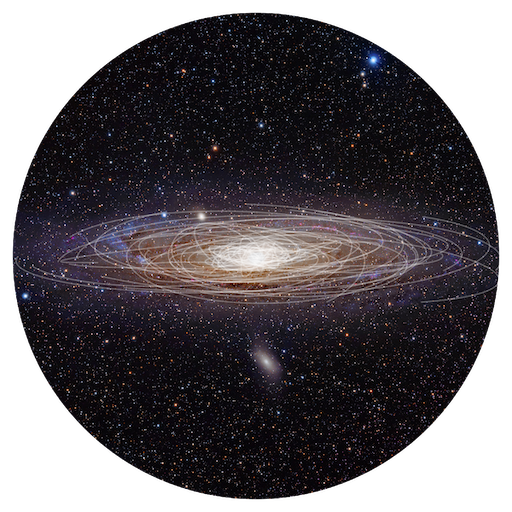Galactic Dynamics at the CCA
The Galactic Dynamics Group at the Center for Computational Astrophysics (CCA) explores how structures in the universe, such as dark matter and stellar halos, galaxy disks, and satellite galaxies and streams, are shaped by gravitational interactions and collective dynamics. Our work has a particular focus on dynamical disequilibrium, where we use theory, numerical simulations, and data analysis to studying the impact of mergers and time-dependent internal dynamical processes on the evolution of galaxies and the Milky Way. Our group makes heavy use of astrometric and stellar data from the Gaia Mission and the Sloan Digital Sky Survey (APOGEE and SDSS-V surveys).
Join the CCA Galactic Dynamics mailing list to receive info about how to join our monthly public group meetings.
Example projects and research directions of the group include:
- Searching for signatures of dark matter substructure in the Milky Way (through, e.g., modeling the density structure of stellar streams),
- Quantifying the impact of time-dependent phenomena on the dynamical evolution of galaxies using numerical simulation and new analysis methods,
- Studying the global distortion of dark matter around the Milky Way due to the infall of the Magellanic Clouds and other satellite galaxies,
- Connecting stellar element abundance data with kinematic measurements to improve dynamical inferences,
- Interpreting kinematic signatures of resonances and time-dependence in the Milky Way using Gaia and SDSS-V data,
- Developing new methods to analyze stellar streams around external galaxies in anticipation of deep imaging data from the Rubin Observatory / LSST and the Roman Space Telescope.
Pre-doctoral Students
The CCA runs a program for graduate students to come for an extended (5 month) visit to collaborate with CCA researchers, the CCA Predoctoral Program (see this page for an example of a past call for applications). The CCA Galactic Dynamics group is open to applications for predoctoral program projects during the yearly call for applications, especially for projects that overlap with the broad interests of the group (listed above).
